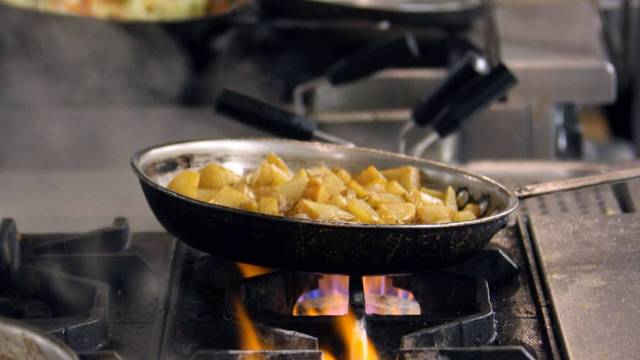Best Asian Restaurant Islamabad: Experience Tastes from Throughout Asia
Savor Genuine Eastern Food With a Pan-Asian Twist for a Cooking Journey
Beginning on a cooking trip via genuine Eastern cuisine, enhanced with a Pan-Asian twist, offers an unique chance to discover the abundant tapestry of flavors that specify the area's diverse culinary traditions. This experience welcomes you to relish the exquisite balance of preferences-- sweet, salted, spicy, and sour-- harmonized by aromatic herbs and flavors. Imagine the innovative fusion of Thai curry and ramen or the unanticipated pleasure of sushi burritos. As you consider these tempting recipes, think about the social stories and historic influences that shape them, each bite offering a story waiting to be discovered.

Exploring Pan-Asian Flavors
In the realm of global gastronomy, Pan-Asian food attracts attention for its exceptional diversity and the harmonious interplay of flavors from numerous Asian cultures. This culinary approach commemorates the rich practices and one-of-a-kind components located across the continent, creating a tapestry of tastes that is both gratifying and appealing. Trick to Pan-Asian food is its ability to balance contrasting tastes-- wonderful, salted, spicy, and sour-- while highlighting the freshness and top quality of each ingredient.
From the umami-rich soy sauce of Japan to the fiery chili peppers of Thailand, Pan-Asian food uses a substantial scheme of tastes. These aspects are commonly combined in inventive methods, improving meals with layers of intricacy. For example, the use of aromatic herbs such as lemongrass and cilantro, usual in Vietnamese and Thai food, adds a revitalizing brightness to recipes, while the unification of coconut milk delivers a creamy, rich texture.
The focus on fresh fruit and vegetables and fragrant spices guarantees that each dish is not just a feast for the taste but also for the detects. Pan-Asian food invites restaurants to begin on a culinary trip, exploring the large and differed landscapes of Asian gastronomy with every bite.
Fusion Recipes to Try
While Pan-Asian cuisine is celebrated for its traditional tastes, the contemporary culinary landscape is increasingly accepting fusion dishes that blend these classic elements with influences from various other regions. This cutting-edge approach not only honors the rich heritage of Oriental culinary arts but also presents unique taste experiences that interest modern tastes buds.
A prime instance of such a fusion dish is the Korean-Mexican taco, where marinaded bulgogi beef is wrapped in a warm tortilla, topped with kimchi and a spicy gochujang-infused salsa. This mix marries the bold, savory flavors of Korea with the vivid, fresh components of Mexican cuisine. Similarly, sushi burritos have obtained appeal, integrating the fragile artistry of Japanese sushi with the hearty, hand-held comfort of a burrito, commonly including fusion ingredients like tempura shrimp and avocado with a drizzle of wasabi mayo.
One more significant meal is Thai curry ramen, which instills the luscious, fragrant seasonings of Thai curry into the reassuring broth of standard Japanese ramen, producing a harmonious blend that tantalizes the senses. These fusion meals prolong beyond plain uniqueness; they stand for a culinary discussion between societies, urging exploration and advancement in the world of Pan-Asian cuisine.
Necessary Active Ingredients and Spices
To truly appreciate Pan-Asian food, one have to understand the crucial active ingredients and flavors that develop its structure. This diverse culinary design draws from a rich tapestry of Eastern practices, employing an unified mix of textures and tastes. Secret ingredients include soy sauce, fish sauce, and oyster sauce, which impart a tasty umami depth essential to Eastern meals. Complementary to these are rice vinegar and mirin, offering a delicate acidity and sweetness.
Aromatic components dos amigos are critical, with garlic, ginger, and lemongrass being common across different Pan-Asian recipes. These components give a fragrant base that enhances the complexity of flavors. Flavors such as celebrity anise, cardamom, and cinnamon introduce warmth and character, echoing influences from areas like China and India.

Cooking Techniques and Tips
Grasping the art of Pan-Asian cuisine needs knowledge with its distinct More hints food preparation techniques, each adding to the dynamic tapestry of flavors this culinary custom is celebrated for. Central to these techniques is the stir-fry, a fast cooking method that protects the dietary stability and vibrant colors of active ingredients. Using a wok, the stir-fry method enables for even heat distribution, necessary for accomplishing the particular structure and taste balance of Pan-Asian dishes.
An additional essential technique is steaming, particularly prevalent in Chinese food. This gentle approach preserves the natural flavors and nutrients of active ingredients, making it excellent for seafood and veggies. Dumplings, a precious staple, frequently take advantage of steaming, resulting in soft, succulent structures.
Barbecuing, additionally integral, gives smoky depths to dishes such as Oriental bulgogi or Japanese yakitori (Best ambiance restaurants Islamabad). This method commonly includes marinating active ingredients, permitting flavors to penetrate deeply prior to cooking over an open fire or warmer
Finally, mastering the art of balancing flavors-- pleasant, sour, salty, bitter, and umami-- is essential. Effectively layering these aspects can boost a recipe from ordinary to remarkable, using a facility and satisfying culinary experience that embodies the essence of Pan-Asian cuisine.
Eating Experiences Worldwide
Around the world, Pan-Asian cuisine offers an exceptional eating experience, commemorated for its rich tapestry of flavors and vibrant presentations. This culinary sensation has actually gone beyond social borders, recording the hearts and tastes of food lovers worldwide. In worldwide cities fresh York, London, and Sydney, Pan-Asian restaurants serve as melting pots where cooking practices from Thailand, Japan, China, and beyond assemble, supplying restaurants with a diverse mix of meals use this link that highlight the area's variety.
The international appeal of Pan-Asian food depends on its ability to offer both authenticity and development. Chefs skillfully marry standard ingredients such as lemongrass, soy sauce, and miso with modern methods, leading to dishes that are both acquainted and refreshingly new. This blend allows restaurants to begin on a culinary trip that values heritage while accepting modernity.
Additionally, eating experiences are raised with thoughtfully designed environments that reflect the ethos of Pan-Asian appearances. From minimalist Japanese-inspired interiors to lively Thai-themed spaces, each restaurant provides an one-of-a-kind setting that enhances the culinary offerings. Consequently, clients are not simply consuming a dish but partaking in a cultural experience, making Pan-Asian eating a truly international sensation.
Verdict
The exploration of Pan-Asian food provides an extensive understanding of the complex interaction of tastes and culinary customs across Asia. By welcoming fusion recipes such as Thai curry ramen and sushi burritos, the culinary journey not just highlights the adaptability of typical components yet additionally showcases ingenious modern-day methods. This gastronomic journey, enriched by cooking methods and necessary spices, gives an unique possibility to value the multiculturalism and cooking artistry that define Pan-Asian cuisine on a worldwide scale.
Embarking on a cooking journey through authentic Oriental food, enhanced with a Pan-Asian twist, provides an one-of-a-kind opportunity to check out the rich tapestry of flavors that specify the region's diverse culinary customs.In the realm of worldwide gastronomy, Pan-Asian food stands out for its remarkable variety and the unified interplay of tastes from numerous Asian societies. Secret to Pan-Asian cuisine is its capability to stabilize different flavors-- pleasant, salty, spicy, and sour-- while highlighting the freshness and top quality of each ingredient.
